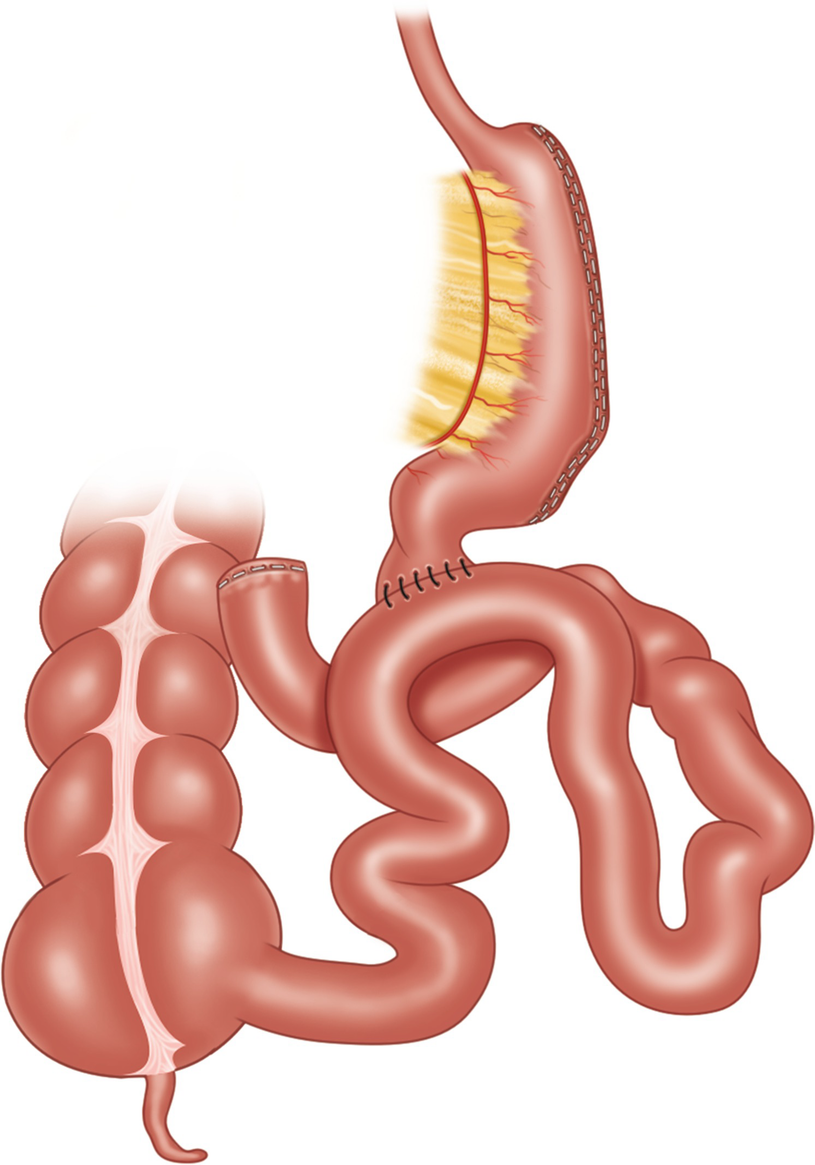Overview
Laparoscopic Single Anastomosis Duodenal-Ileal bypass with Sleeve, also known as SADI-S, is one of the most powerful bariatric techniques to achieve weight loss. It is a good option for patients with severe obesity, either as primary (initial) surgery or as a revisional procedure after failure of a sleeve gastrectomy.
SADI-S is a laparoscopic procedure. It consists of two steps:
- In the first step, a “sleeve gastrectomy” of the stomach is performed to reduced and narrow the stomach into a ‘tube’ to reduce the stomach’s capacity (almost 80% of the stomach is removed).
- A small bowel bypass is performed to reduce the surface for food absorption. Specifically, the middle part of the small bowel is excluded from food transit. Thus, after this second step, the first part of the small bowel, called the duodenum, is connected to the distal small bowel (named ileum).
In short, after this operation, the food travels from the small new stomach to the distal intestine bypassing a long segment of the small bowel, which remains in the abdominal cavity, but is excluded from the food circulation. These anatomical changes decrease oral intake and reduce the absorption of the nutrients and calories eaten.
Patients who undergo this procedure can lose up to 70% of excess of weight in one year, a weight loss that is generally maintained afterwards. It is a bariatric procedure with high success rates in the resolution of diabetes mellitus type II, dyslipidaemia, hypertension and OSA.
SADI-S is generally well tolerated. Bowel movements frequency depends on the amount of fibre and water consumption. A few patients encounter biliary reflux (bitter taste), in which case an endoscopy is warranted.
Risks
This technique is complex and surgical complications are more frequent than with other bariatric procedures. Furthermore, it might have other long-term side effects such as vitamin deficiencies (specifically fat-soluble vitamins A, D, K and E), calcium, zinc and iron deficiencies as well as an increased risk for protein and fatty acid hypo-absorption.
To reduce these side effects, adequate education and preparation is mandatory before and after the surgery. This includes healthy eating habits, exercise and the prescription of nutritional supplements.
Finally, all patients should be followed closely by their general practitioners.





